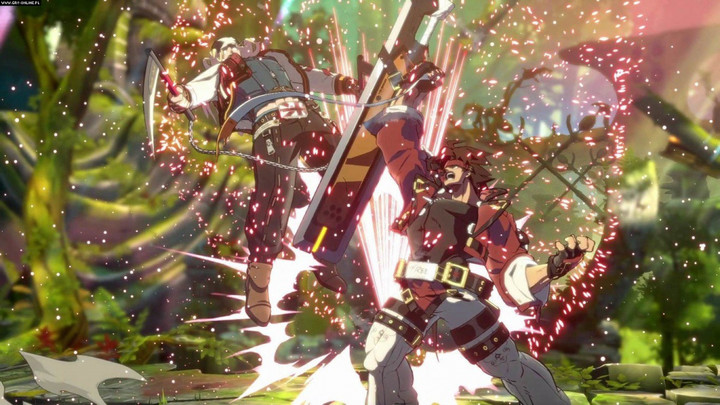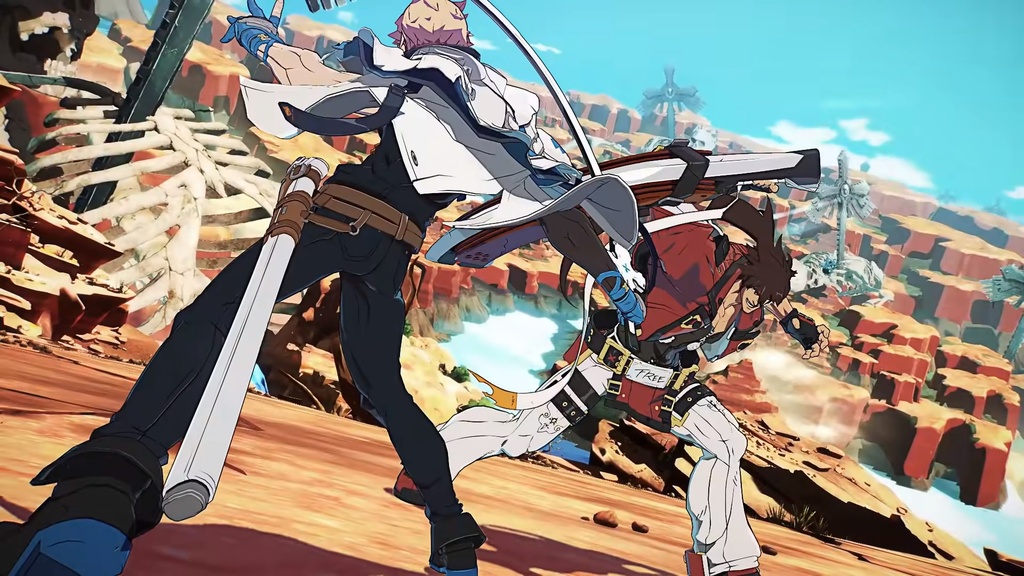Guilty Gear Strive has generated a level of attention the franchise has never attracted before. Since it first released on the PlayStation in 1998, Guilty Gear has always remained a tier below heavyweights like Tekken and Mortal Kombat in popularity. The games are excellent, yet they’ve always had an accessibility issue — whether from the intimidating learning curve or industrial anime presentation.
After success with Dragon Ball FighterZ, developer Arc System Works has seized the opportunity to broaden Guilty Gear’s appeal. Mechanics in Guilty Gear Xrd: Revelator 2 have been reworked and streamlined, while visually, the flourishes have never looked so striking. The inclusion of rollback netcode, which improves the stability of online matches, has only driven further enthusiasm behind it — at a time when fighting game tournaments have suffered throughout the pandemic due to patchy worldwide connections.
There’s always concern a shoot for mass appeal will dilute unique qualities, yet Guilty Gear Strive strikes a remarkable balance between welcoming newcomers and providing depth for those who seek it. A recommended opening tutorial throws you into a brief match to teach basic attacks, blocks and movement. After that, you’re free to choose whether to dive in further with learning mechanics, or have at it across other modes as you please.
The game encourages freedom to play at your own speed. In Arcade mode, a standard run through eight stages with different paths for each character, the difficulty adjusts on the fly based on your performance. If you win the first match easily, you’ll be thrown into the ‘extreme’ difficulty branch, whereas a 2-1 victory might bump you into ‘hard’, and a loss will set course on the easiest path. It’s a welcoming system where any level of player can feel satisfied, while giving veterans a challenge to keep them coming back.
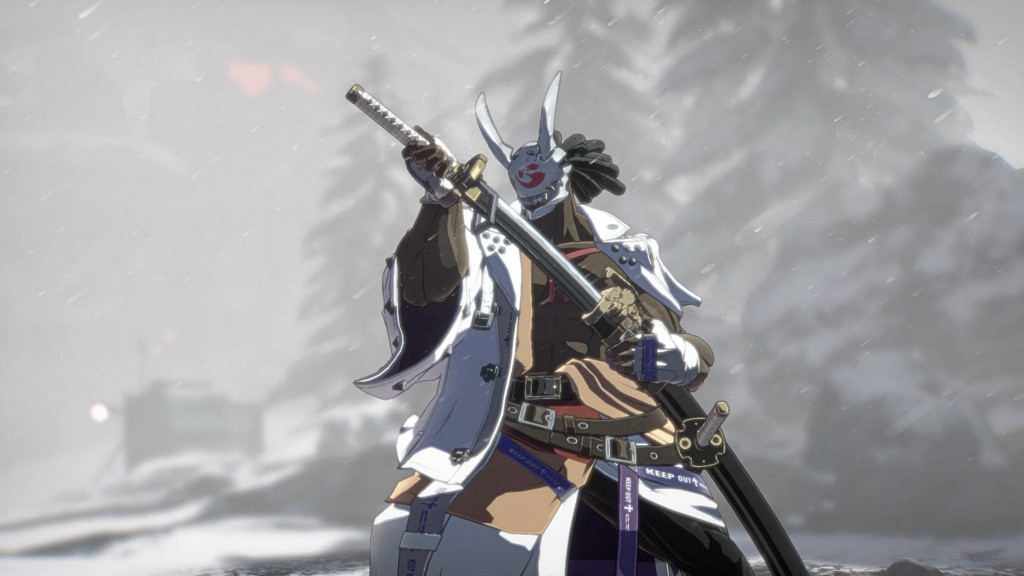
A big adjustment to even the playing field is the increased damage. New players can dole out basic attacks which can be just as punishing as complex manoeuvres. It’s a noticeable change yet it never feels like an experienced player wouldn’t have the upper hand, especially as countering moves and knowing when to strike is still the key to success. For new players, it simply makes the experience less frustrating than past titles.
Strive’s depth presents itself in the Dojo training area, where you progress through missions designed to teach mechanics and intricate combos. A tension meter is the source for the show-stopping overdrive attacks, which fills up based on your aggression in battle. Psych burst moves return for clearance or blocking powerful attacks which might otherwise end a round. Guilty Gear’s signature mechanic, Roman Cancels, are the key to mastery. By holding down three attack buttons (whether directly after an attack, in free movement, when blocking an attack etc) you can maintain combo, briefly slow time, or interrupt an enemy’s combo. It’s a mechanic you can bypass entirely, yet when online, could be the differentiator between a win and ‘SLASH’ demise.
This all might sound intimidating but Guilty Gear Strive’s combat is fun to play (and watch) no matter your skill level. Counters are given dramatic slow motion effects and screaming banners, new wall breaks smash your opponent sky high from one terrain to the next, and huge numbers flash when racking up combos. It’s dynamic, exhilarating, and with the rollicking metal soundtrack by lead creator Daisuke Ishiwatari, a bonkers blast on the senses. Coupled with the stunning animation, it’s probably the most visually stylish fighting game ever made.
It helps each fighter has a distinctive personality and playing style. The bulk of the 15 character roster are from Guilty Gear’s past, with two new additions in samurai vampire Nagoriyuki and Giovanna, a special operations officer for the US President entangled with a green wolf spirit. The former is a powerful, weighty behemoth with poor agility, while Giovanna is a surprisingly strong all-rounder perfect for beginners.
Even between the obvious differences in weight, speed and power, there’s a personality and balance which makes all the characters interesting to experiment with. Faust is creepy and comedic, flailing and lunging with elastic limbs, and ramming wheelchairs into shins for a comical shrieks. I-No is a witch who clobbers with electric guitars, and Axl Low, a personal favourite, is a time-travelling pirate with chained scythes who can pull enemies over long distance. They’re mad and distinctive in a way few anime fighters manage, something which held back Arc System Works’ previous fighter Granblue Fantasy Versus.
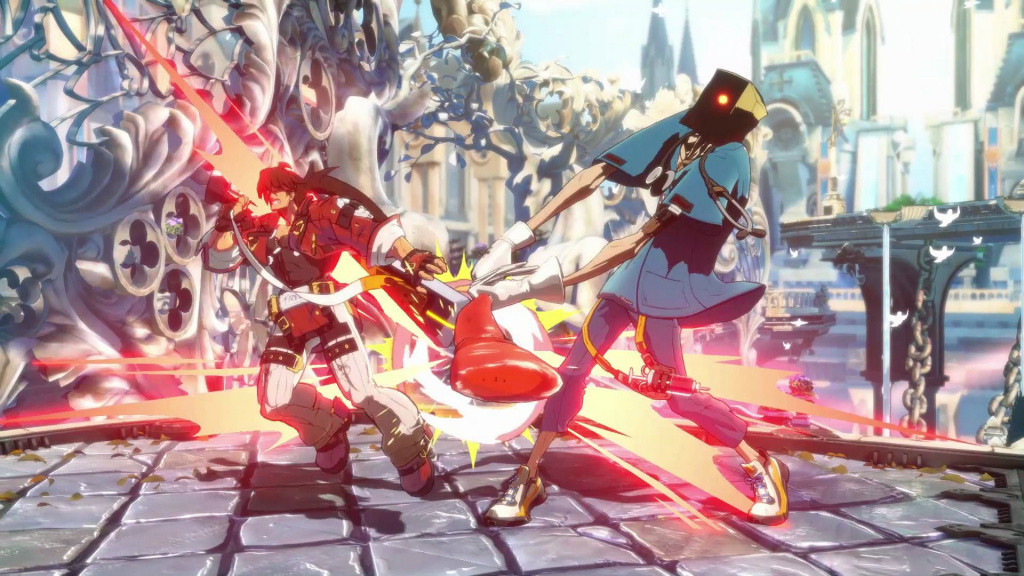
The biggest issue from the open beta was the chaotic online lobby system. Similar to Dragon Ball FighterZ, you control and customise an avatar to match with opponents. In Strive, your avatar is reminiscent of pixel sprites from Habbo Hotel, with each region given a ranking tower with different floors. You’re assigned to a floor based on your skill level determined by ranked matches, but you’re able to battle players on higher floors if you wish, while lower floors are off limits.
The problem before was simply getting into matches, as sprites frantically hop around floors trying to start fights, and there’s been some improvements to streamline the process since. You now stand at a podium when you’re wanting a match, until another avatar hops on the opposing podium to fight you. There’s charm to it with the customisation, but it still feels needlessly complicated. The fact there’s a tutorial to explain the whole setup is an alarm bell in itself, yet we’ll have to see how it functions once thousands of players are on the server when the game releases, to see if it’s a smooth experience.
At the time of writing, the servers have been online a day and we’ve had mixed success in connecting to matches. These issues were mostly when connecting to further afield territories like Japan, Korea and US, while our limited play within Europe due to lack of players (it recommends your local region) was generally impressively fast, responsive and lag free. Some issues at launch are expected, yet the lauded rollback netcode is noticeable even at this early stage.
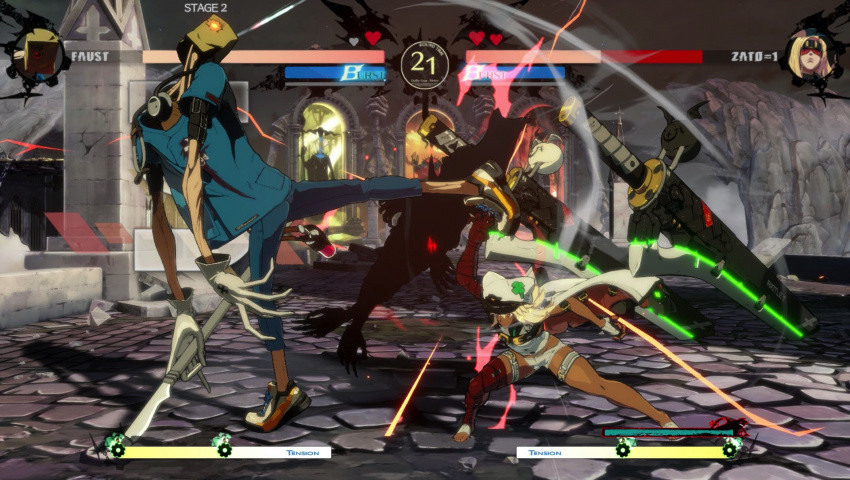
Outside of online play, Guilty Gear Strive’s suite of modes feels limited in comparison to Mortal Kombat or Tekken. There’s Arcade, the Dojo missions, Versus and Survival; a fun deviation where you takedown as many opponents as possible in one-round matches. The creators however have explained (via Eurogamer) modes were cut due to the COVID-19 pandemic, teasing a release via a free update down the line, so this might be a temporary issue for launch.
Like past Guilty Gear titles, there’s also story mode which boils down to five hours of anime cutscenes, broken into chapters. It’s far better than you're perhaps expecting, with sharp dialogue and entertaining action sequences. It justifies the unplayable direction, and solves the typical fighting game story conundrum of finding reasons for characters to constantly battle. It makes more sense in Strive too, fitting into the push for accessibility.
You’re rewarded with in-game currency by playing these modes, which you use to fish (literally) for avatar cosmetics, music and concept art. The season pass with five additional characters might expand the game’s options moving forward, but the fighting mechanics are rich enough where reruns of Arcade and Survival for currency are always enjoyable.

 No ads, our video library,
No ads, our video library,
